can design create a better world?

08.12.2015 Features
“Eeum: Design Connects” was held between October 17-23, 2015, and ico-D, the International Council of Design played a key role in its organisation. All areas of design were represented, with over 2,000 participants, including scholars and experts from 46 nations. The Congress concluded with a historic announcement, the “Eeum Design Connects Declaration” signed by seven international design organisations. This declaration called for the mobilisation, collaboration and increased unity of design for the future.
The aim of this report is to examine some of the key concepts highlighted during the Congress.
Introduction
As we examine extremely complex and multi-faceted political, economic, social, and ecological issues on a global level, design as a process of problem solving will become increasingly relevant. States, regions and cities are turning to design to find solutions to seemingly intractable problems, problems that are accentuated by the increased interconnectedness of society, technology and culture. Design has always played a key role in shaping the physical aspects that constitute a society, but as globalisation intensifies, society needs to find new ways of functioning, either by doing more with less or more fundamentally by reshaping the current paradigms that dominate the thinking underlying structures and institutions that govern how we live.
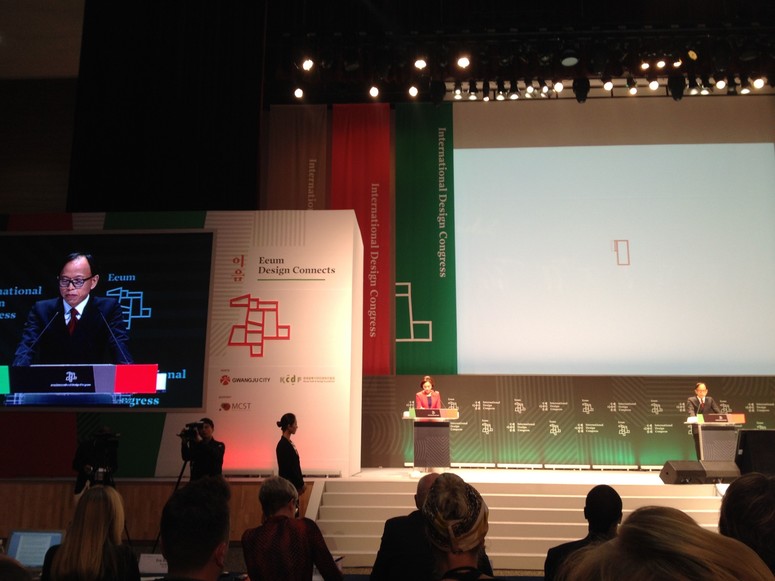
Don Ryun Chang, Organising Chair of the 2015 International Design Congress opening the Congress.
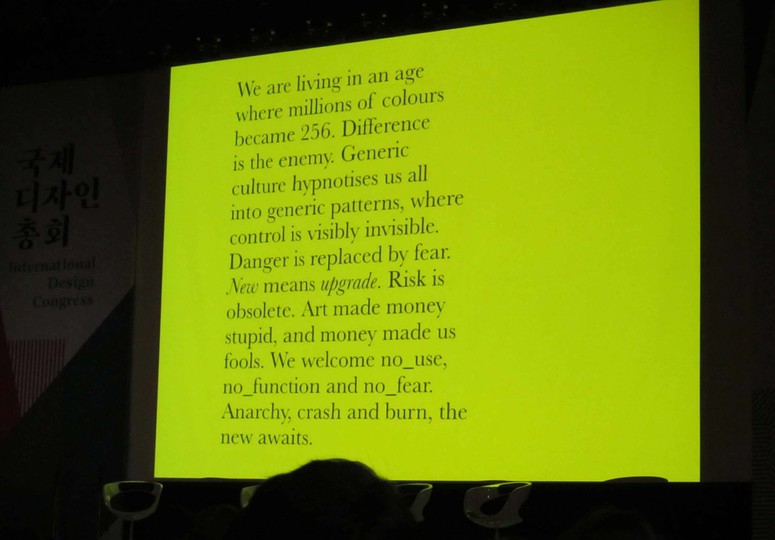
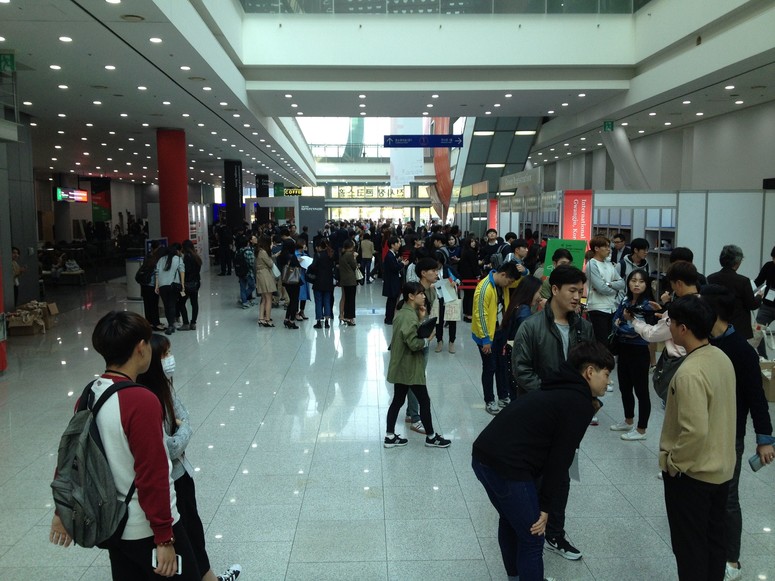
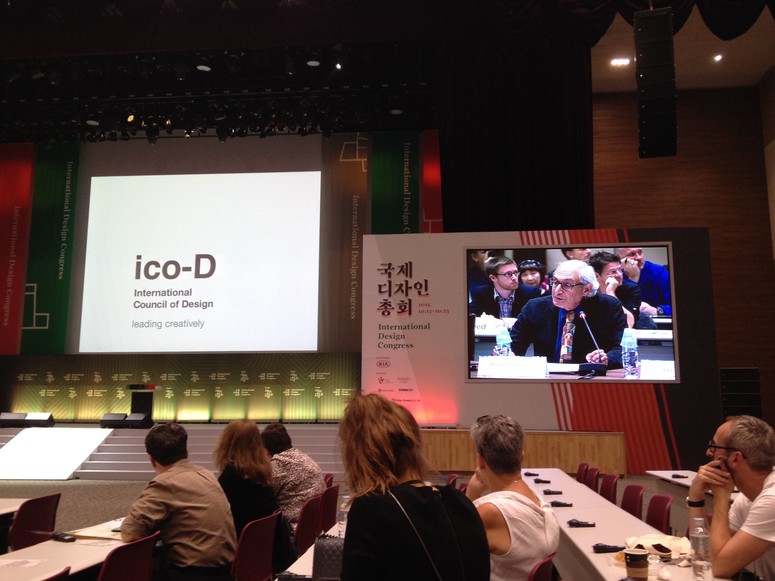
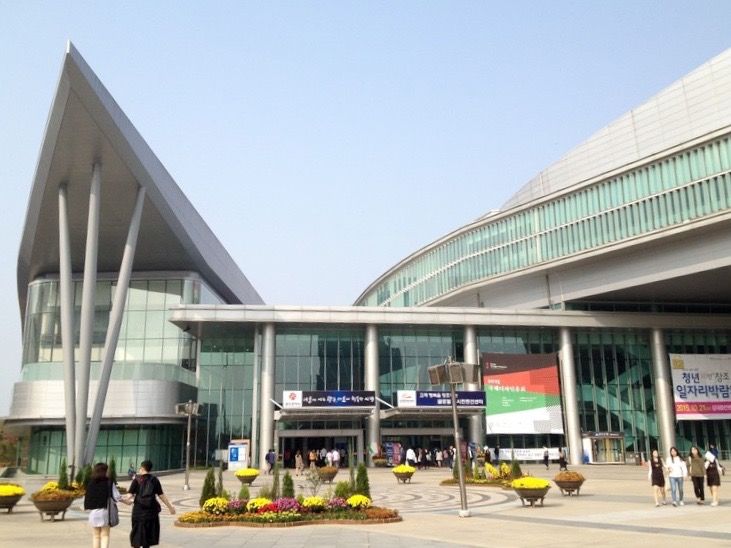 The official Eeum Design Declaration signed 21 October 2015 by seven international design partners.
The official Eeum Design Declaration signed 21 October 2015 by seven international design partners.
Openness and Creativity
Designers are often misconstrued by the public as merely designing the interiors of homes or styling the pattern on a fabric, but design is much deeper than that. Designers are constantly striving to breach these traditional demarcations and are increasingly applying their expertise in a cross disciplinary way that includes other types of thinking. Through this expanded approach the question is now more about ‘Where is design now?’ and ‘Where does design belong?’
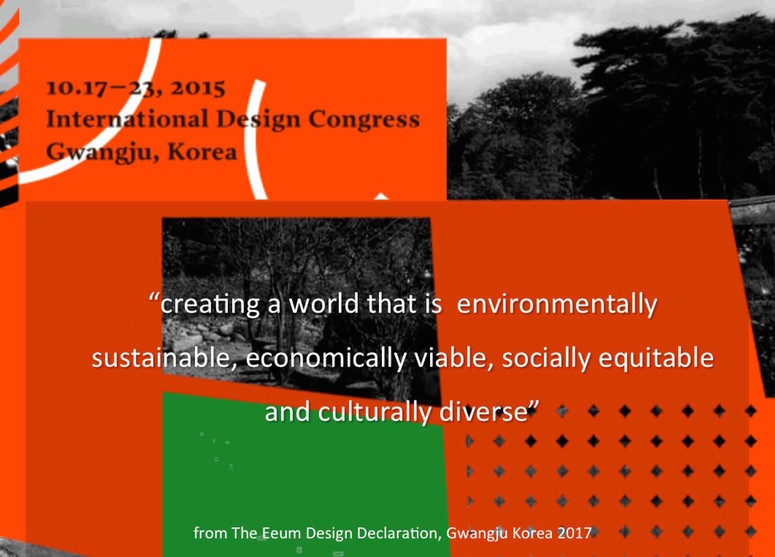 The 'Making Space with Culture' installations, part of the KDJ exhibition space that ran parallel to the Congress, was a multi-faceted design project for turning culturally-estranged facilities, such as juvenile reformatories, children's facilities, military installations, and facilities for the disabled through a variety of cultural contexts into spaces for dreaming, hope, happiness, and joy. Presented by the Korean Ministry of Culture, Sports and Tourism, supervised by .
The 'Making Space with Culture' installations, part of the KDJ exhibition space that ran parallel to the Congress, was a multi-faceted design project for turning culturally-estranged facilities, such as juvenile reformatories, children's facilities, military installations, and facilities for the disabled through a variety of cultural contexts into spaces for dreaming, hope, happiness, and joy. Presented by the Korean Ministry of Culture, Sports and Tourism, supervised by .
These questions create an awareness of what design means to society, thus fostering broader inclusion and wider involvement when approaching a diversity of issues. Designers are able to effect change through participation across multiple layers of societal organisation— moving up through civil society, to various layers of government—such as local and national, while on the other hand working from the top down through global, international and regional institutions and organisations.
Sharing and Participation
As design becomes more ubiquitous, it runs the risk of being diluted. For example, in the industrial era, where the previously elegant forms of design became subject to the economic logics of function, the value of pure design for the end-user is constantly threatened by other competing priorities and logics. In contemporary times, we are beginning to see design being liberated from being no more than a conduit of information transference to being an actual source of information making a tangible contribution to the lives of ordinary people. We can also see unitary design models being replaced by more diverse variants and design methods becoming actual working methods.
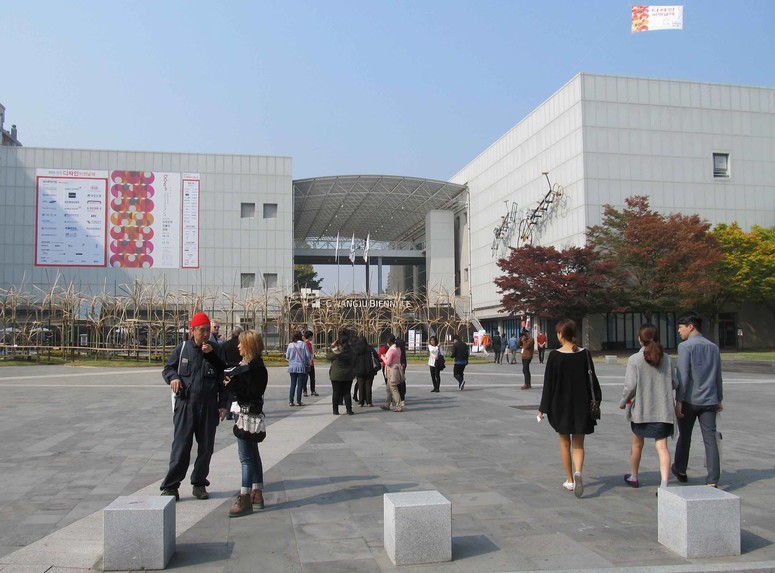 Former Icograda President Robert L. Peters delivering his presentation entitled 'One eye sees, the other feels'.
Former Icograda President Robert L. Peters delivering his presentation entitled 'One eye sees, the other feels'.
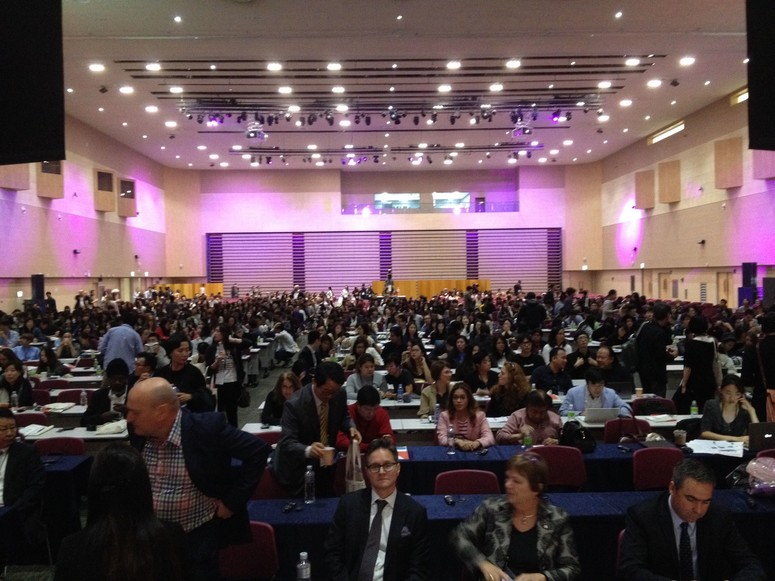 As part of a shared global initiative, Congress participants identified a list of key themes explored throughout the Congress sessions.
As part of a shared global initiative, Congress participants identified a list of key themes explored throughout the Congress sessions.
Concepts such as ‘open source design’ and ‘collective creativity’ allow for designers and non-designers to collaborate on what is a more inclusive and all-encompassing approach to problem solving. It concurrently adds a more democratic working structure to approaching everyday problems. With these developments and with evolutions in technology, human emotions, thoughts and our inherent needs can be encapsulated in the design process. New design fields such as interactive gaming approaches to learning and service design add to our general human experience as we increasingly are able to ‘design our lives’ through these new relationships.
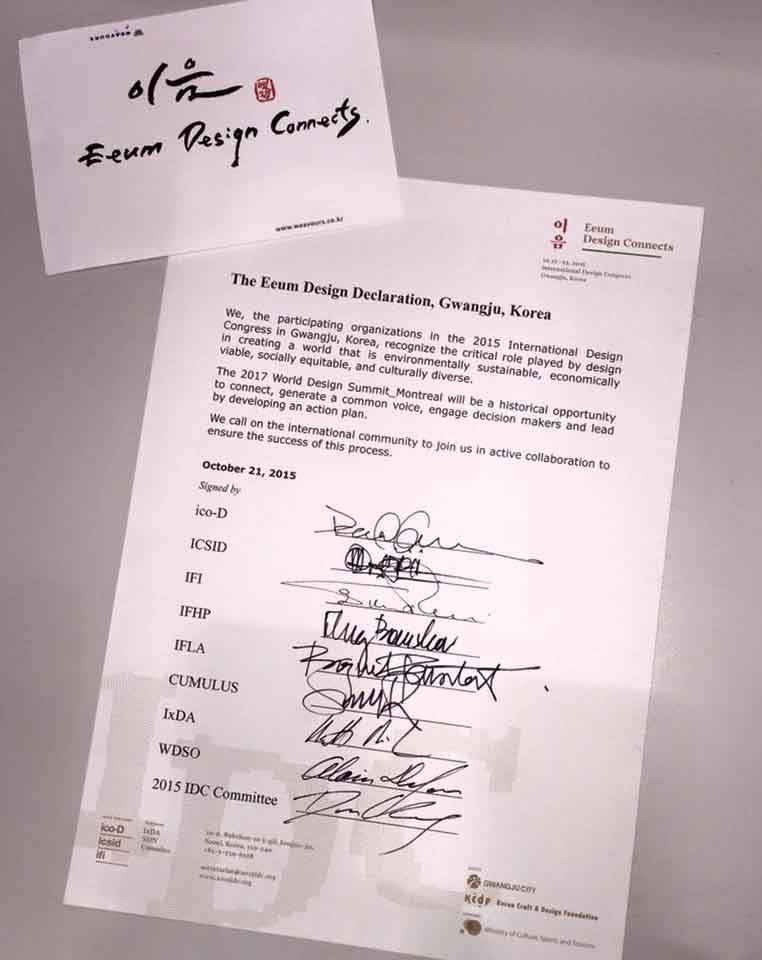 Ahn Sangsoo in his signature PATI coveralls and red hat, was a prominent figure throughout the Congress—his talk for the Future Design Education sessions would discuss the innovative work of Design School-Paju Typography Institute (PATI)—"a design school that is built and developed by designers themselves."
Ahn Sangsoo in his signature PATI coveralls and red hat, was a prominent figure throughout the Congress—his talk for the Future Design Education sessions would discuss the innovative work of Design School-Paju Typography Institute (PATI)—"a design school that is built and developed by designers themselves."
Impact and Accessibility
As design increasingly becomes nested within broader societal relations, new processes will evolve to maintain its level of impact and relevance. Socio-economic, cultural and ecological strata will increasingly be defined by design elements, spurring new solutions and paradigmatic shifts. When a critical mass of individuals gets behind the design thinking process it becomes fundamentally transformative. In this sense, design is a call to action. Action cannot happen in the analysis, development and production of an object or service, it is deeper than that. Action happens when people are involved in a process together and that process can be further enhanced by the design process itself. Design in essence is a holistic approach to problem solving and requires conscious action. The effects of which can be seen on changes in society, social behaviour, institutional transformation, social innovation and public creativity.
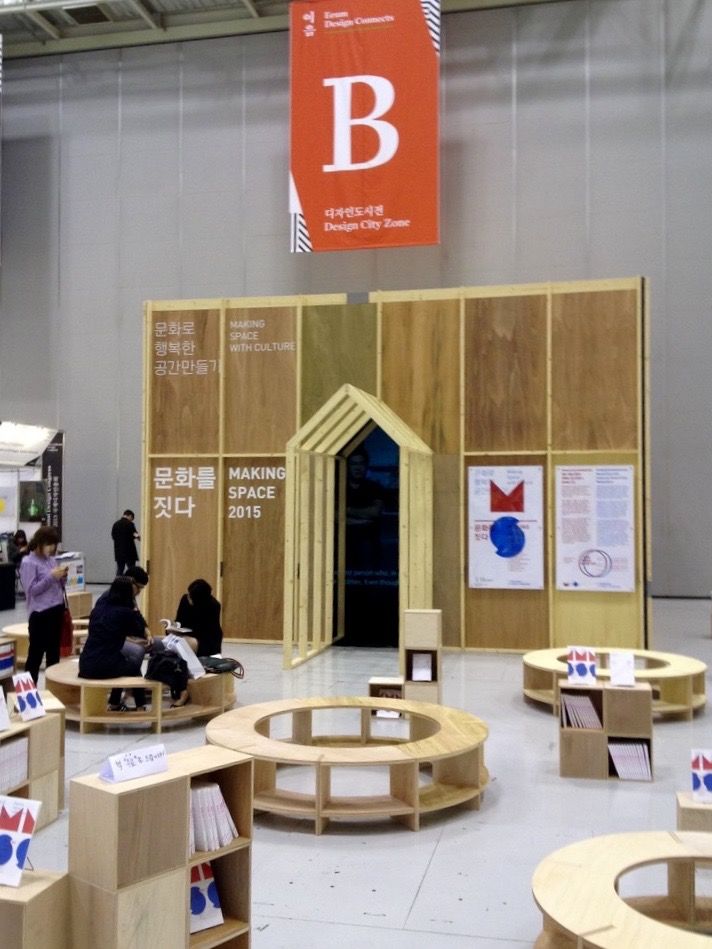 Off-Congress moments: live performances in traditional and contemporary forms, expressing the future of design through bodies, sound, and installation.
Off-Congress moments: live performances in traditional and contemporary forms, expressing the future of design through bodies, sound, and installation.
Innovation and Entrepreneurship
Once we consider the areas that can be transformed by new design initiatives, an entrepreneurial dividend can be unleashed much in the way that a peace dividend can be accrued when countries decide to cooperate and invest not in destroying one another but in the betterment of their societies. In an age of increased rapid communication, underpinned by the technological advances that have fuelled globalisation, the adoption of change inspired by design foments the transformation of society almost instantaneously. Much in the way we hear of global crises, we will begin to hear of global solutions. Therefore, it is critical that a new design activism take shape. This proactive design must answer two critical questions: 1) How can design thinking contribute to the solution of these problems? And 2) what kind of design solutions can contribute to it? In that sense, well-planned smart approaches and in-depth innovations are needed.
Such innovations should not only concentrate on ‘end products’ but also on the consequences and reproduction facilitated by those end products. For example, metropolitan areas currently accommodate over half the worlds’ population, and this is only set to increase. By increasingly applying design thinking to urban living, we can shape the realities over half the human population, not only in their daily lives but by influencing patterns of consumption, changing habits and using resources more efficiently into the future. We are ultimately facilitating the reproduction of positive modes of living through incorporating design into everyday life.
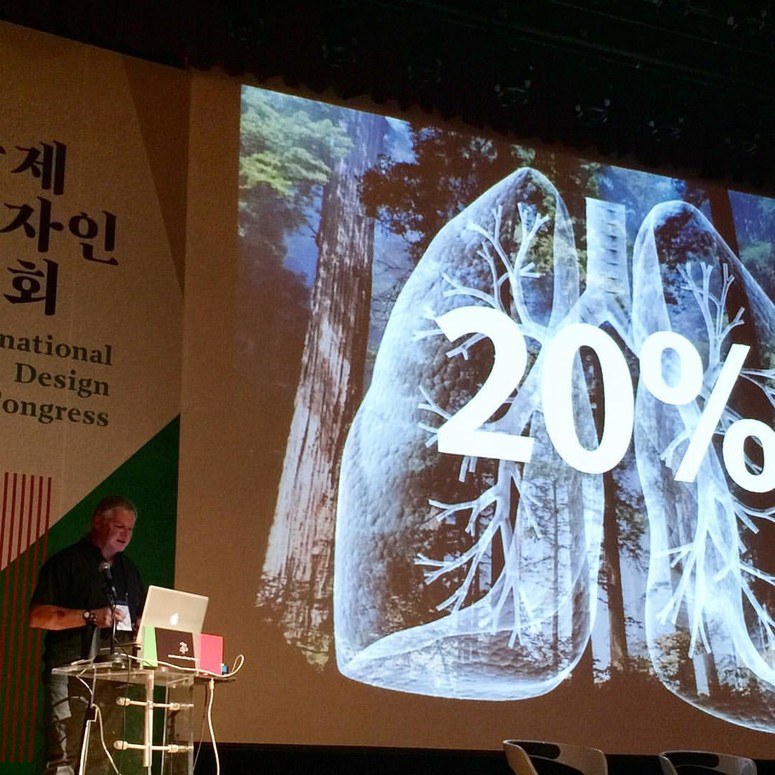
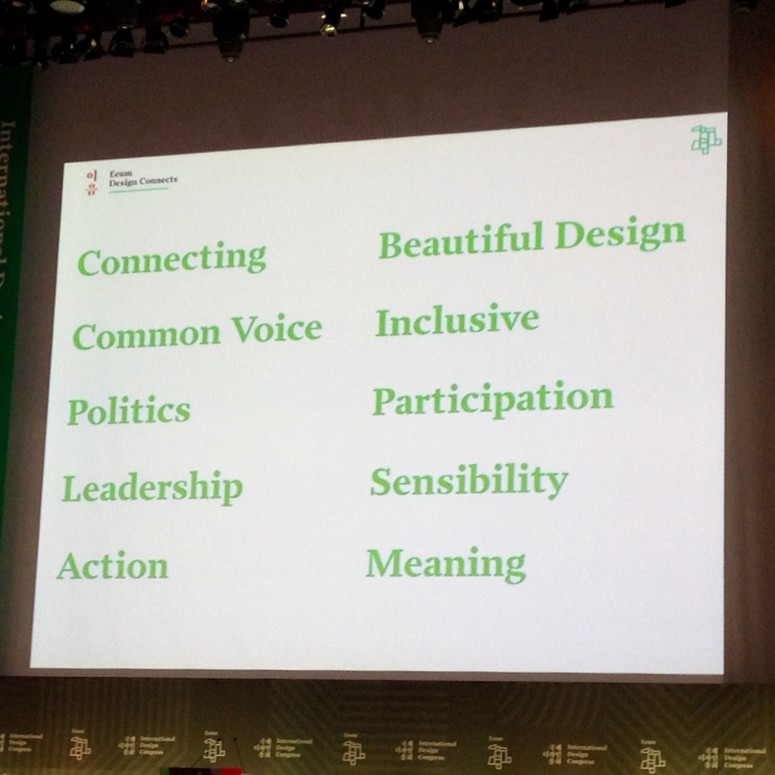
In conclusion
Victor Margolin, prominent design historian and someone who has been very active within ico-D stated, “we are at a global turning point”. If design is to have a role in shaping tomorrow’s world, design thinking must be incorporated immediately, lest its role be filled by other logics and interests, logics and interests that have led to many of the seemingly intractable issues mentioned in the introduction. It is the marked absence of design thinking in general society that has led to so many problems, and it is up to designers to contribute to the solution of problems and not merely be sidelined and utilised for the purely instrumental task of providing material end products. The designers of the future should help shape the visions of ‘what could be a better world’ and ‘how design can create such a world’.
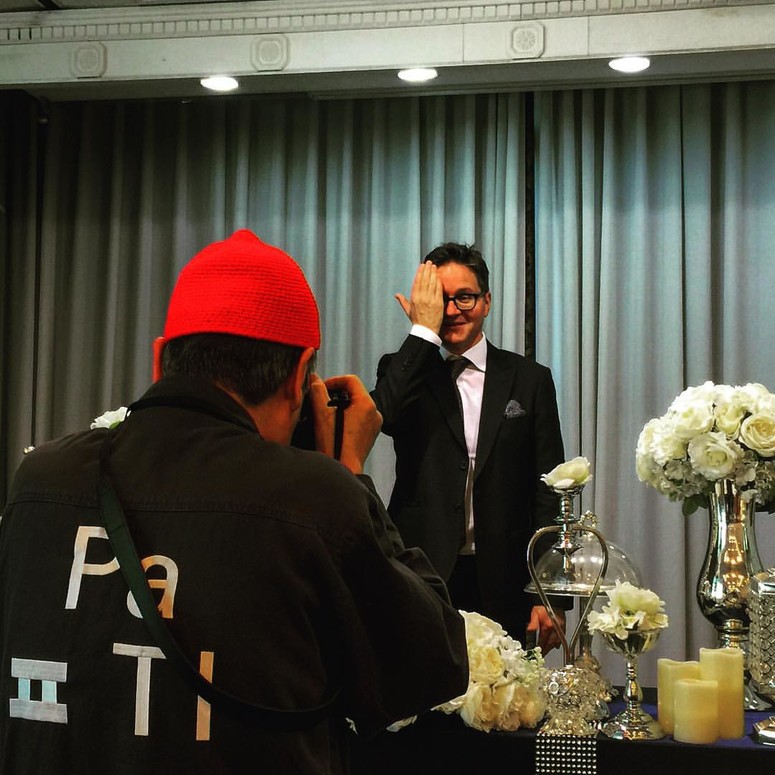
ico-D President Elect and Moderator David Grossman led the 'Share and Participate in Communication' sessions at the City Culture Design Summit.
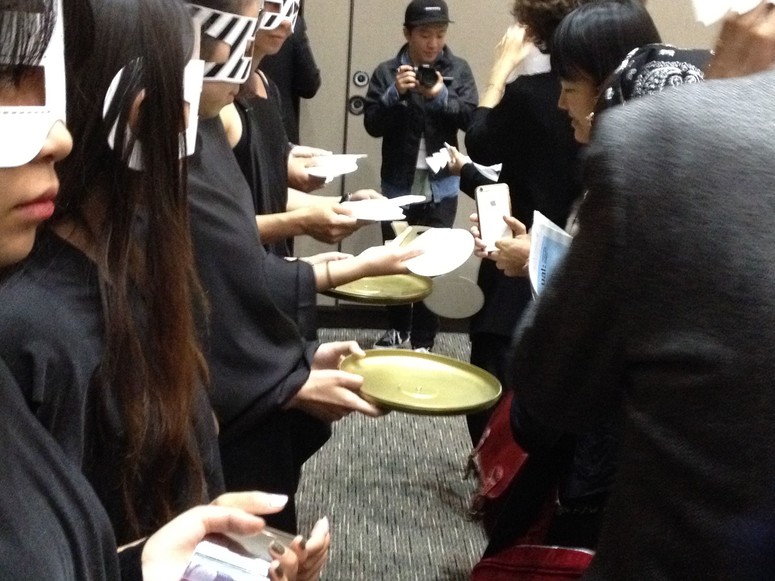 KDJ (Kimdaejung) Convention Cente
KDJ (Kimdaejung) Convention Cente
This report is a courtesy translation. Read the original report in Turkish here.
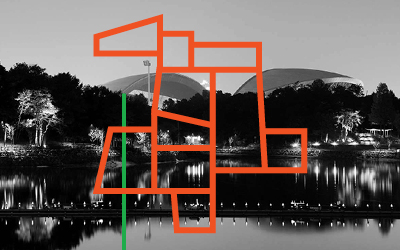
relatedarticles

goodbye! and next steps for colleague and friend alexey lazarev

explorations in ethical design: meditations on equality

RCA launches new programme: MA Digital Direction

Interview | Ermolaev Bureau (Moscow)
